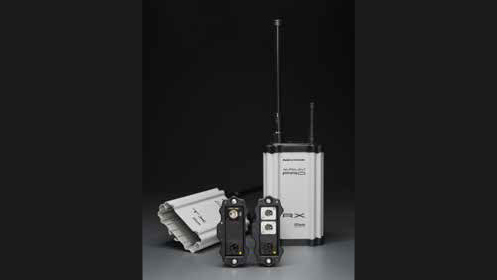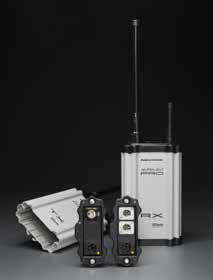Neutrik’s Xirium: the Cable Killer

It took 15 years of development, but it’s finally ready: earlier this year, Neutrik released Xirium Pro, a revolutionary solution for sending uncompressed audio signals to equipment that would be difficult or impossible to reach with cables. It’s also the first wireless Dante product certified by Audinate.

Neutrik’s Xirium Pro can transmit 20-Hz-to- 20-kHz audio, completely uncompressed, at distances up to half a mile with 3.6 milliseconds or less of latency. “It’s designed to transmit the entire concert,” said Mark Boyadjian, product applications manager at Neutrik USA. “Think delay towers; think pavilions; think a main stage and side stages, and transmitting that throughout a park; or maybe a multi-day palooza event where if you ran cables, they’re going to get destroyed or muddied up. With this, you can get the sound where you need it.”
Xirium Pro can transmit 20-Hz-to-20-kHz audio, completely uncompressed, at distances up to half a mile with 3.6 milliseconds or less latency. “So from the ground up it’s a cable replacement, not just a wireless device,” Boyadjian said.
The reason it took so long to develop, according to Boyadjian, was due to challenge of perfecting the reliable transmission of signals at the 5 GHz bandwidth. As he explained, wavelengths at this bandwidth are very tiny—only 6 centimeters in length— so they have a harder time permeating solid surfaces, whereas lower frequencies—like those of bass from subwoofers—can have wavelengths of up to 200 feet, which is why you often hear booming bass from cars with loud stereos, but little else.
“So once we knew what frequency we were going to use, and that we had the technology and the algorithms and the chip that we developed to be able to transmit the sound the way we wanted—like a wire,” Boyadjian said, “then we had to make sure that we could provide the right technology to make that signal as resilient as possible.”
Transmitting signals between the Xirium Pro transmitter and receiver requires a clear line of sight; however, with the use of a repeater module, it can send signals through glass or concrete, go around corners and obstacles, or extend a clear line-of-sight signal up to a full mile. Xirium Pro was recently used with repeaters at a Chicago fashion show, where the audio was transmitted through glass and up to speakers on a second floor, and at a luxury auto event in New York to send audio from a mezzanine level to two other floors, through glass and concrete. The repeater module can also be used for redundancy: in the event that the line of sight between transmitter and receiver is blocked, a secondary path through the repeater will ensure an uninterrupted connection.
Though the Xirium Pro is limited to two audio channels, due to constraints on bandwidth, it accepts three different inputs and outputs: analog, AES EBU, and Dante.
A daily selection of the top stories for AV integrators, resellers and consultants. Sign up below.
In the time since its release to the U.S. market, Boyadjian said the product has been highly successful. “So far we have yet to disappoint anyone,” he said. “I’m blown away by the response so far—whether it’s been Disney, or different speaker manufacturers, amplifier manufacturers, live sound companies—they’ve all been pretty much blown away with what we can do.
In fact, Boyadjian said that customers have been so enthralled by the possibilities Xirium enables that he’s had to try to keep them planted in convention. “We’ve had to try to dial it down, and say ‘Look: this product, as wonderful as it is, is not the be-all, end-all. It’s not there to replace every single cable in every situation.’”
But, with the way technology is trending, how long will it be until cables really are a thing of the past?
Matt Pruznick is associate editor of SCN and Residential Systems. Follow him on Twitter @Pruznick.
Matt Pruznick is the former editor of AV Technology, and senior editor for Systems Contractor News and Residential Systems. He is based in New York.

